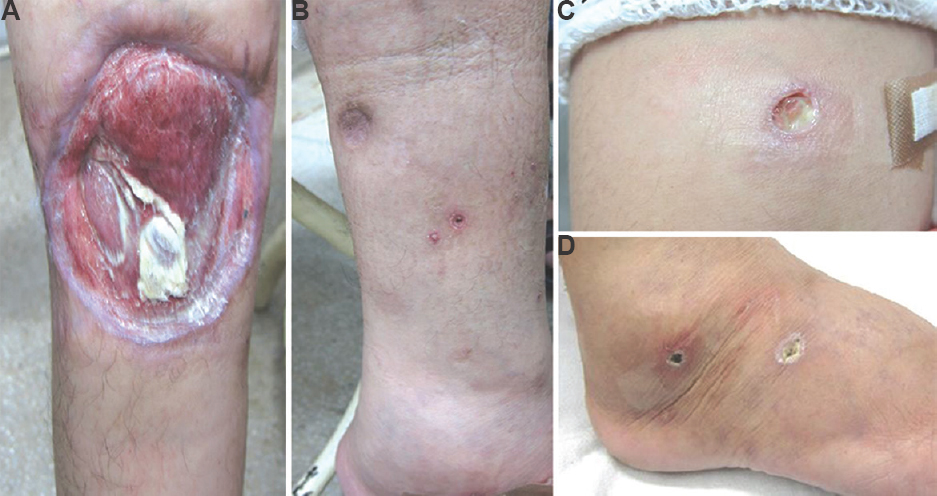Translate this page into:
Chronic ulcer with rejected skin graft in a female: Pentazocine-induced skin ulcers revisited
*For correspondence: article.sardana@gmail.com
-
Received: ,
This is an open access journal, and articles are distributed under the terms of the Creative Commons Attribution-NonCommercial-ShareAlike 4.0 License, which allows others to remix, tweak, and build upon the work non-commercially, as long as appropriate credit is given and the new creations are licensed under the identical terms.
This article was originally published by Medknow Publications & Media Pvt Ltd and was migrated to Scientific Scholar after the change of Publisher.
A 37 yr old woman† was referred from the Plastic Surgery department to the department of Dermatology, Venereology and Leprosy, Post Graduate Institute of Medical Education and Research, Dr. Ram Manohar Lohia Hospital, New Delhi, India, in March 2016, with complaint of failure of the skin grafting on a chronic ulcer. On examination, single well-defined large ulcer of about 7 cm was present over the medial aspect of the right leg (Figure A), and scars of previous healed ulcers were found on both legs (Figure B). Multiple well-defined punched out ulcers ranging in size from 7 mm to 1.5 cm diameter were also seen over both arms and legs (Figure C & D). Skin grafting was done for the large ulcer which underwent rejection within six months. The multiple small ulcers were suggestive of extraneous cause and she admitted to getting injections from local doctor for cervical pain and to sleep better. Tests for antinuclear antibody (ANA), anti-dsDNA, human immunodeficiency virus (HIV), hepatitis B virus (HBV) and hepatitis C virus (HCV) were negative. A diagnosis of pentazocine-induced ulcers was made. Pentazocine abuse should be considered as a differential diagnosis in cases with non-healing ulcers, especially when asymmetrically distributed concomitant clean punched out ulcers are seen. Histopathology can help rule out other disorders such as pyoderma gangrenosum, necrotizing vasculitis and mycobacterial infections.

- (A) A single well-defined ulcer of size 7 cm present over medial aspect of the right leg with sloping margins, floor of the ulcer is clean with underlying muscles clearly visible. (B) Scars of the previous ulcers visible over the course of superficial veins. (C & D) Multiple well-defined punched out ulcers with indurated firm base, erythematous margins with perceptible violaceous hue, slough present on the floor with little granulation tissue. Ulcers range in size from 7 mm to 1.5 cm diameter and are present over both arms and legs with surrounding pedal and hand oedema.
The patient was referred to psychiatry department for deaddiction and was kept on gradually tapering doses of oral tapentadol and alprazolam. Alternate day dressing resulted in complete healing of small ulcers in three months. Repeat grafting was also planned. Drug cessation is crucial for effective cure of such drug-induced ulcers. Conservative treatment results in poor response if pentazocine is not stopped and skin grafting may be needed in large nonhealing ulcers.
Acknowledgment:
Authors acknowledge the prompt and effective role of Dr Manoj Jha, Head, Department of Burns and Plastics Maxillofacial, Dr. Ram Manohar Lohia Hospital, New Delhi, in this case.
Conflicts of Interest: None.





